The Scars of War: Vietnam Comfort Women
comfortwomen4815
Unfortunately, many governments have drawn a line of distinction between the comfort women of World War II and the prostitutes in the wars that followed.
Published: April 9, 2015 | Authors: Lolita Di | NationofChange | Blog Post
*1 by Sora
Note comfort women for Japanese military were also paid.
四月の記事のようだが、ようやく、こういった記事がでてきた。
タブチ記者、残念だったねーーー米軍性奴隷、韓国軍性奴隷を隠蔽した記者として、歴史に残るだろう、このままだと、あんさんは。
comfortwomen4815
Unfortunately, many governments have drawn a line of distinction between the comfort women of World War II and the prostitutes in the wars that followed.
Published: April 9, 2015 | Authors: Lolita Di | NationofChange | Blog Post
During the Vietnam War (late 1960’s – early 1970’s) South Korea sent troops to Vietnam in an attempt to keep South Vietnam free from communism. It was reported later that many South Korean troops raped Vietnamese women and committed atrocities such as massacring farmers and aged people, and many others were forced into working as prostitutes for the South Korean soldiers. Many of these women would then later become pregnant and after these mixed Korean-Vietnamese children were born they were shunned by Vietnamese society and their soldier fathers returned to South Korea never to be seen or heard from again. The plight of these women was lost to history and not discussed until the late 1990’s when many of the victims began to speak out against the Vietnam and South Korean governments and demand recognition and compensation. To date the South Korean government has done little to acknowledge the issue but has continued to pursue further financial compensation from Japan for their own comfort women survivors and some say that their actions have become hypocritical and they are using the issue as their own political tool. In fact, South Korea orchestrated with Korean-American’s politically-driven campaign in the U.S. continent against Japan.
Acknowledgement and Compensation of Comfort Women
In 1973 Japanese author Kakou Senada published the first account of comfort women titled Military Comfort Women which detailed the Japanese army’s involvement in establishing comfort stations. The book was roundly criticized and attacked as being false, but it led to research into the issue. The Kono Statement of 1993, which was released by then Chief Cabinet Secretary of Japan, Yohei Kono acknowledged the involvement of the military in the establishment of comfort stations and the coercion of the comfort women.
As a result, Japan set up the Asian Women’s Fund to compensate the victims of this practice partly funded by the Japanese government. Korea had also demanded compensation from the government and received $800 million in aid and loan packages over ten years. The South Korean government has been publicly supportive of the thousands of comfort women taken from their country and homes during the wars, even going after Japan for a second compensation. But history has shown that the Korean government was complicit in the use of comfort women.
Korea’s Use of Comfort Women
In large part due to testimony from survivors of the comfort station system, we now know that Korea established their own comfort women system during the Korean War (1950-1953). The Korean military set up two types of comfort stations—U.N. Comfort Stations for U.N. soldiers and Special Comfort Stations for Korean soldiers.
Many Korean women were forced to work in these comfort stations and many of those women were married and had children to support. Husbands were drafted into service and they had no other means to support their families. In many cases these comfort women were trucked to the front lines to service South Korean soldiers.
During the Vietnam War, South Korea sent troops to aid the anti-communist forces and while establishing their own comfort stations. Initially, South Korean soldiers raped many Vietnamese women then both the South Korean and Vietnamese military began to force Vietnamese women to work in comfort stations. In many cases children were produced as a result of the rapes and forced into sexual slavery as Vietnam comfort women.
These children are referred to as lai Daihan. The term is specific to children born of a South Korean father and a Vietnamese mother. It is unclear how many of these children were born, but estimates range in the tens of thousands. Unfortunately these children were ostracized by the Vietnamese and stigmatized because they were a product of rape and forced sexual encounters.
The issue has largely remained a secret and information from the Vietnam War period has been hard to come by, though there is documentation that the Viet Cong did report to the Korean military on the huge numbers of rapes and kidnappings of Vietnamese comfort women by Korean troops during the war.
With more and more Korean survivors, among others, coming forward and giving testimony to what they suffered, the hope is that the truth about Vietnamese comfort women and their children will eventually come to light.
But while statues have been erected to commemorate the lives and suffering of comfort women at the hands of the Japanese and protest have been held to pressure Japan to take official responsibility for their actions, the plight of comfort women used by South Korea, both during the Korean War and Vietnam War has largely gone ignored
Vietnamese Comfort Women and the U.S. Military
Prostitution was big business during the Vietnam War and many American servicemen took advantage of this service. Thousands of women worked out of camps and bars that sprung up around U.S. military bases. Many of these women got pregnant and the resulting children—some estimates put the number around 50,000—were shunned and ostracized, much like the children of mixed Korean and Vietnamese descent.
These children are called ‘bui doi‘ which translates to “dirt of life.” The women, too, were shunned and forced to live a life of poverty. Considering the history of comfort women used by both the Japanese and Korean military, and the coercion of many Korean women into forced prostitution, one wonders how many of these prostitutes were also coerced. It may not have been done by the Vietnamese government directly, but if prostitution is illegal in the country, then the government turned a blind eye. It is believed they may have even encouraged the practice to generate income.
Many of the thousands of women working as prostitutes during the Vietnam War were held against their will by pimps and lured with the promise of good-paying, respectable jobs so they could support their families in a country torn apart by war. They would never see most of the money, if any, paid to their pimps or the bar owners by the American soldiers. In some cases women were injected with silicone to make them more shapely so that the American soldiers would feel more “at home” with the Asian women.
While the U.S. military did not officially condone the practice of prostitution around military bases, they didn’t do anything to stop it, either. In many cases, soldiers on leave would go to surrounding countries where a similar set-up existed, such as in Thailand. Many of these hubs of prostitution were referred to as ‘rest & recreation’ sites. So even among the U.S. military, the practice was unofficially encouraged. If the men were kept happy, they followed orders and stayed in line.
And there were many instances of rape by soldiers during the war, among the other atrocities committed against the civilian population. It seems there has always been the misguided perception that allowing prostitution or establishing comfort stations would reduce rape, but that is a fallacy, as is the idea that the spread of sexually transmitted disease can somehow be controlled.
Governments also turn a blind eye and even encourage prostitution with the belief that it can elevate the socioeconomic status of the country. By permitting either system, governments allow the rape, abuse, and exploitation of women.
Unfortunately, many governments have drawn a line of distinction between the comfort women of World War II and the prostitutes in the wars that followed. They cite that fact that prostitutes were paid, so they couldn’t possibly have been forced.*1 Whether forced through kidnapping, lured with the promise of a job, or coerced due to financial constraints, it is still exploitation of women.
What these governments refuse to acknowledge is that the women who worked as prostitutes were cheated out of any money and many were forced and held against their will.
While many have pressured the Japanese government to acknowledge and atone for their use of comfort women, many of these same governments should acknowledge their roles in the exploitation of these women. It’s time for Korea, Vietnam, and the United States to take responsibility for their actions and their encouragement of abuse.
*1 by Sora
Note comfort women for Japanese military were also paid.
四月の記事のようだが、ようやく、こういった記事がでてきた。
タブチ記者、残念だったねーーー米軍性奴隷、韓国軍性奴隷を隠蔽した記者として、歴史に残るだろう、このままだと、あんさんは。











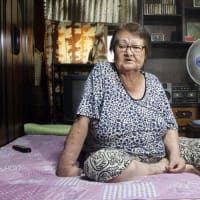
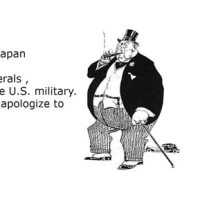


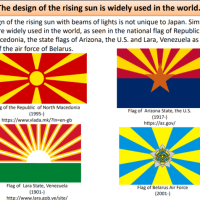
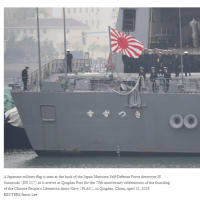
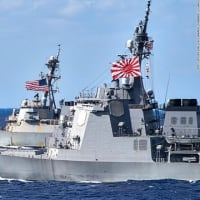
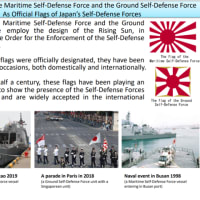
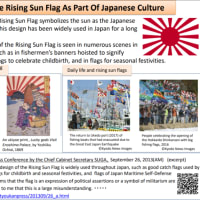
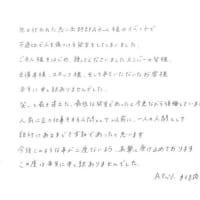
by Lolita Di
Nationof Change, April 9, 2015
と共にぜひ多くの人たちに読んでもらいたい記事があります。
'Why Has South Korea Still Not Apologized To The Vietnam Comfort Women?' なぜ韓国(政府)はベトナム人慰安婦たちにいまだに謝罪しないのか?
by Chris Grasso
Examiner.com May 27, 2015
です。ぜひ、英語読者向けに拡散してください。
宜しくお願い申し上げます。
http://blog.goo.ne.jp/kentanakachan/e/7e12bbd6e256b324e48da9cfbc5a0ec3
"South Korean soldiers raped many Vietnamese women then both the South Korean and Vietnamese military began to force Vietnamese women to work in comfort stations. In many cases children were produced as a result of the rapes and forced into sexual slavery as Vietnam comfort women. " - but as a person who is doing some reaseach on this issue not any sources state that. What I mean is there was "Lai Dai Han" and rapes in the war but the forcement of women in the "comfort stations" and up to their children is not stated anywhere. If you look at the victims, the women who had Lai Dai Han children non of them talk about some sort of sexual slavery they were trapped into. Then why are there no victims reporting of being decived and being forced to work into comfort stations at all? There is bound to be women who are alive that used to work in the comfrot staions. But unlike the Lai Dai Han, we can't hear anything from them. Which leads us into thinking that the majority of them were actually recuirted knowing what they were up for and paid. (the humanity issues they might have faced inside there after knowing what they were up to is a different matter in this case.)
そりゃ、日本軍慰安婦についても同じだよ。
日本軍慰安婦でも、”強制”って他に仕事がなかった、というのも含むんだよ。
そもそも、韓国では、洋公主はさげすまれて、外にでにく状況にあるから発言しにくいんだよ。
ひどい話だよ。
日本軍の慰安婦は謝罪と補償され、米軍の慰安婦になると蔑まれる。